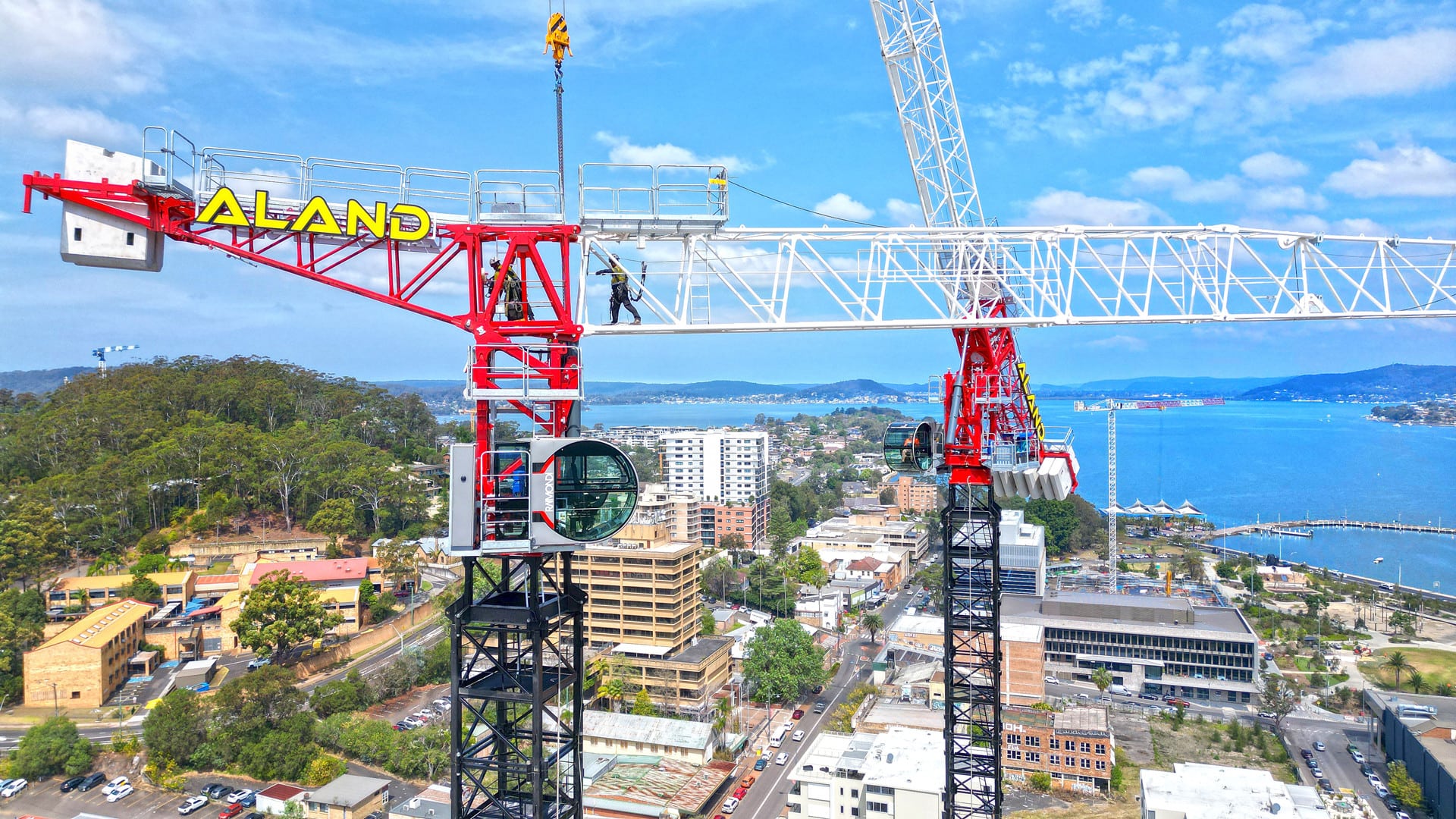High-tech cranes rise over Gosford’s Archibald site

Two of the world’s most technologically advanced cranes dominate the Gosford skyline as work continues on ALAND’s $375 million Archibald by ALAND project. The cranes, specially imported from Italy, will remain on-site for the next 14 months as the two Archibald towers take shape.
Read the full story by Jack Alfonso on Cranes and Lifting
The mixed-use development is set to transform Gosford, with 323 residential apartments and penthouses, a 130-room hotel and multiple food and beverage outlets, including a SkyBar & Lounge on Level 28.
Buyer interest in the development has been extraordinary, with two-thirds of the apartments sold since designs for the project were unveiled to the public earlier this year. The arrival of the cranes is creating even more interest in Archibald.
ALAND CEO George Tadrosse says the cranes, code-named LRH174, are made by Raimondi in Legnano (near Milan) – there are only a couple of others in Australia.
“These cranes feature advanced technology and are next level when it comes to manoeuvrability, safety, and energy efficiency. They are just another example of how ALAND is leading the way in the building and development industry,” he said.
The cranes boast a lifting capacity of up to 10 tonnes with a freestanding height up to 150 metres. They also use hydraulic luffing (raising and lowering the jib) rather than a traditional electric winch and cable system. Hydraulic luffing offers faster erection and dismantle times, a faster working speed, and almost 50% more energy efficiency.
“Not only is the energy efficiency better for the environment, but it also helps to keep our energy bills down and we can pass those savings on to the customer through lower apartment prices,” he said.
Mr Tadrosse says the Italian cranes have a number of advantages over conventional cranes, such as their manoeuvrability, but are also much safer than a traditional cable system which can snap, allowing the jib to come crashing down.
“This crane is like a seesaw and with the jib at equilibrium and the hydraulic ram pushing it up and down. In any event of hydraulic failure the ram is fitted with an anti-cavitation device to ensure the jib is supported at all times of hydraulic pressure loss,” he said.
“In the past, we have seen typical luffing cranes in high winds crash through their buffers over the A-frame and fall over backwards. Due to the seesaw design, this will not happen with a hydraulic luffer.”
The eye-catching new Italian cranes are already attracting attention in Gosford, with many local sightseers stopping to photograph them.
“If they like the cranes, wait until they see Archibald,” Mr Tadrosse said. For more information visit www.archibaldbyaland.com.au.